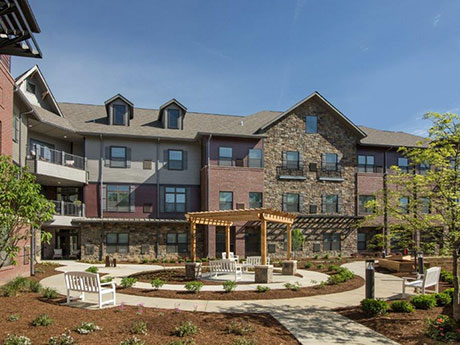By Dan Thies, Sansone Group
We are more than halfway through the year and the multifamily market in the St. Louis metropolitan area continues to grow. As of the first quarter, there were 5,112 multifamily units under construction in the metropolitan area. So far, the rise in interest rates and the increase in construction costs has not dampened the enthusiasm of investors and developers for constructing new units in this market. Vacancy rates continue to stay low and lease rates continue to increase.
As long as these market conditions continue, developers are going to bring new units to market. The new units being built will reflect new design features, which many developers are implementing in their communities.
One of the many design trends taking place across the country and in the St. Louis area addresses the rise in the older population becoming renters. Many members of the baby boomer generation are looking to sell their suburban homes to downsize into smaller, more practical spaces. Their children have moved out of the home, and they no longer need all the space or maintenance of a home. They want to pull the equity out of their home and place it in a bank account.
All of these items point to a desire by baby boomers to have a more flexible lifestyle where they are not tied down by their home. This flexibility allows them to travel more and not spend as much time on their home. This gives them a sense of security and community.
As a result of this increase in demand from baby boomers, developers are designing their communities to accommodate this demographic. They are building more communities with two- and three-bedroom units. These units are larger to accommodate the resident’s entertainment wishes and to help them store all their stuff they accumulated while living in their house.
Developers are also adding more concierge services to their communities to accommodate their older residents. The services being provided handle delivery of groceries, laundry and cleaning units. These services give their residents more freedom to spend time doing other things. Their older residents have a sense of security when they have a relationship with the concierge.
Pandemic effects
Other design trends reflect a post-pandemic environment. Many people now work remotely from home. To accommodate these residents, developers are adding workspaces to their one- and two-bedroom units. These workspaces can have their door closed to give the resident a private area while they are at home.
Developers are also adding business centers and co-op workspaces in their common areas. This provides the resident a work area or a place to have meetings while they are in their community.
Large mailrooms are also being added to communities. These mailrooms have onsite lockers and are much larger than ones designed in the past. This allows the community to handle all the deliveries that are occurring due to the increase in online shopping. Most developments are being called “smart buildings.” Developers are including contactless entry doors, Wi-Fi, smart thermostats and smart lights. Because residents are concerned about health and safety, developers believe they will like these features.
Another trend that developers believe will entice residents to their communities are making them mixed-use. A mixed-use community would be one that provides multiple types of housing options, along with workspace, retail and many amenities. An example of such a development can be seen at Tesson Ridge, which is being developed by Propper Construction Services. The community will provide all forms of housing along with retail and lots of amenity space. This could be very appealing to people who desire to be a part of a community.
Whether it is an older person deciding to downsize into a smaller home or someone wanting to work from home, all of these trends can be seen in communities being built across the St. Louis metropolitan area. As we move further past the pandemic and as a larger portion of our population becomes older, we will continue to see design trends that accommodate this ever-growing portion of our population.
Dan Thies is national director of multifamily development for Sansone Group. This article originally appeared in the September 2022 issue of Heartland Real Estate Business magazine.



